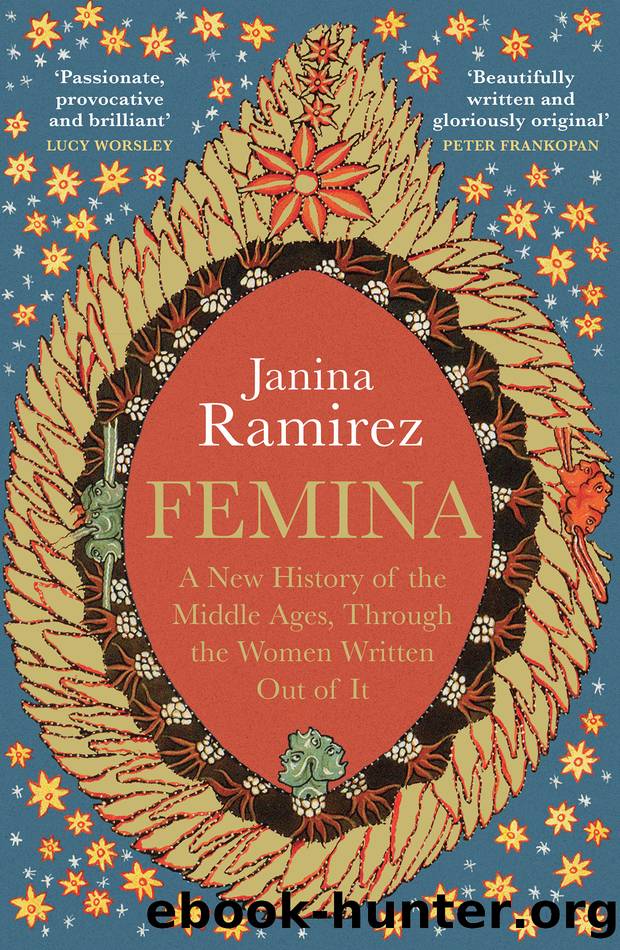Femina: the instant Sunday Times bestseller â a New History of the Middle Ages, Through the Women Written Out of It by Janina Ramirez

Author:Janina Ramirez [Ramirez, Janina]
Language: eng
Format: epub
ISBN: 9780753558270
Publisher: Ebury Publishing
Published: 2022-07-21T00:00:00+00:00
Cathars and Female Spirituality
Cathar beliefs deal with that critical question that young people of faith still grapple with today: âIf there is a good and kind God, then why do bad things happen?â The Catholic Church developed concepts of free will, self-determination and the devil to answer these questions, endorsing the idea of a singularly loving and benevolent God. But in dualist thought there are two gods: one that is perfect, pure, ideal and responsible for all things spiritual. Then there is another that is fallible, creates life on earth and is responsible for the material world.27
If it is hard to get a handle on Cathars generally, then it is even more so with regards to Cathar women.28 Accounts are contradictory, with some stating they could hold the very highest roles within communities, while other say there was âno great tolerance for womenâ.29 A roll call of fascinating individuals come and go with passing references in inquisitorial records: Bérengère âput aside the sect of the heretics, was reconciled and received a husbandâ.30 Fabrissa kept a group of Cathars safe at her castle in Montreal, but was forced to flee from crusaders.31 Berbeigueira was a believer for 30 years and had to watch as her husband, on his deathbed, expelled all Cathars from their home.32 From these records, we can be sure that many women were drawn into Catharism. Why was this dangerous sect so appealing to them?
In Cathar beliefs, humans were, by nature, imperfect â fallen angels whose soul and spirit had been given physical form in frail bodies. They believed a person would continue to be reborn in flawed flesh until they could embrace the ascetic practices of abstaining from meat, rejecting sinful acts and receiving the consolamentum before death. Cathars strove for this moment of consolamentum when their souls would be reunited with their angelic form. This was the ritual that comforted the siege victims at Montségur as they waited to meet their death. The body is prepared through fasting and abstinence, and is purified until the final prayers are said alongside the laying on of hands. Both men and women could perform the consolamentum and it was essentially a last rites exercise, designed to purge the human body of sin and suffering. This ritual suggests that Catharism did not focus on individuals, since angels didnât possess distinct natures or genders but were part of the divine essence of the benevolent âgodâ. Issues of wealth, background, disability, and of course gender therefore did not concern them. This may have been an incentive to the women who embraced Catharism, since if a person could break the cycle of being born back into flesh, they could cast off their physical forms and return to the essential good spirit.
Because all human flesh was weak and prone to evil, Cathars rejected the idea that Jesus was divine. Why would God put himself in a human vessel? They also reportedly rejected the symbol of the cross. The deposition against one Peter Garcia of Bourguet-Nau says he was overheard making heretical comments during the Good Friday procession.
Download
This site does not store any files on its server. We only index and link to content provided by other sites. Please contact the content providers to delete copyright contents if any and email us, we'll remove relevant links or contents immediately.
| Civilization & Culture | Expeditions & Discoveries |
| Jewish | Maritime History & Piracy |
| Religious | Slavery & Emancipation |
| Women in History |
Cecilia; Or, Memoirs of an Heiress — Volume 1 by Fanny Burney(32063)
Cecilia; Or, Memoirs of an Heiress — Volume 3 by Fanny Burney(31458)
Cecilia; Or, Memoirs of an Heiress — Volume 2 by Fanny Burney(31409)
The Secret History by Donna Tartt(18166)
Sapiens: A Brief History of Humankind by Yuval Noah Harari(13991)
Leonardo da Vinci by Walter Isaacson(12804)
The Radium Girls by Kate Moore(11621)
Sapiens by Yuval Noah Harari(5124)
How Democracies Die by Steven Levitsky & Daniel Ziblatt(4959)
The Wind in My Hair by Masih Alinejad(4844)
Homo Deus: A Brief History of Tomorrow by Yuval Noah Harari(4690)
Endurance: Shackleton's Incredible Voyage by Alfred Lansing(4507)
Man's Search for Meaning by Viktor Frankl(4278)
The Silk Roads by Peter Frankopan(4274)
Millionaire: The Philanderer, Gambler, and Duelist Who Invented Modern Finance by Janet Gleeson(4101)
The Rape of Nanking by Iris Chang(4023)
Hitler in Los Angeles by Steven J. Ross(3799)
The Motorcycle Diaries by Ernesto Che Guevara(3788)
Joan of Arc by Mary Gordon(3784)
